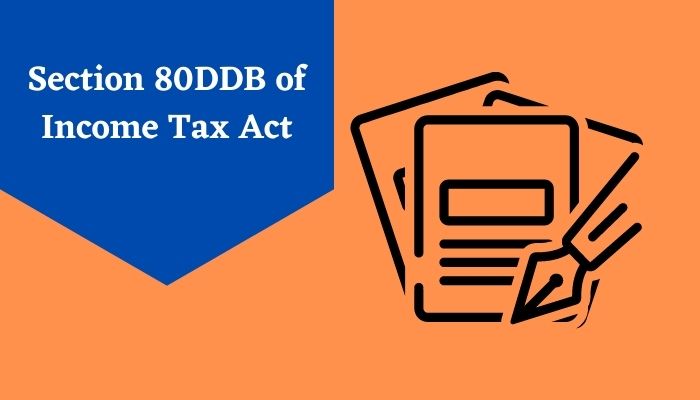How to get started with your first Stock Market Investment?
With the end of the fiscal year 2021, about a whopping INR 99 trillion have been parked in the public sector banks in the form of fixed deposits earning an average of 5% interest. On the other hand, retail inflation averaged at approximately 6%. This means that if you’re putting money in the bank, it is not growing, it is, in fact, getting eroded. To make things worse, if you fall in the tax-paying brackets, you have to pay taxes on that interest income that further deflates the value of your deposit.
While there are other avenues for investing your money, the stock market is perhaps the most enigmatic and paradoxical financial realm – a place that you dread, yet covet to get the best of, simultaneously.
We won’t deny that for beginners, it is easy to get overwhelmed and hence abstain entirely from dipping your toes into stock market waters. Don’t worry, we’re here to guide you every step of the way.
What Is the Stock Market?
Like any market, this is a collection of platforms or exchanges where the buyers of shares meet the sellers/issuers of shares. Only here, the buyer or the seller could be me, you, or anyone for that matter. As public money is mainly at stake, this market is extensively regulated and monitored by SEBI, an independent body, to boost investors’ confidence.
When you buy a share of a company listed in the markets, you essentially become the co-owner of that company (even if the stake is less than 1%) and thus bear the risk and rewards that the company is exposed to. But it’s not that you have to keep holding the shares forever. You can sell it off to interested buyers, take your exit, and encash the amount. This is how the market provides liquidity to you as an investor.
The Common Myths That Have Been Hardwired into Us
- The market is risky – it is as good as gambling:
Yes, it is risky, and the trends show that there have been booms and crashes; sure, it’s not a smooth hike. But if we look at the leading index, we can see how it has grown exponentially in the long term.
- The small investors are never rewarded:
You must have heard the name of Mr. Porinju Veliyath, hailing from a very low-income family of farmers in Kerala, who became one of India’s most renowned stock-pickers. Now that might sound like a one-off case, but there have been many more of such ‘rags to riches’ life stories that are less popular and rarely spoken of. You could start with a minimal amount, as low as Rs. 500, and grow your portfolio systematically with time and patience.
- You need to be from the finance background:
Undoubtedly, it sometimes acts as initial leverage when you are comfortable with the world of finance. Still, many investors who have consistently beaten the markets are not necessarily from the finance stream. What you need for the stock market is common sense, and the rest will follow suit.
Who Are the Facilitators in This Ecosystem?
So, How Do You Get Started?
Even a decade ago, you would have had to break a sweat to open your Trading or Demat account with a registered stockbroker. A trading account is through which you buy or sell securities and is needed irrespective of whether you wish to do day trading or investing (more on it later). But if you want to buy and hold shares for a certain period you have to have a Demat account too. Gone are the days of intensive paperwork. With the advent of digital trading and investment platforms, your first stock market investment is only a few clicks away.
You’ll Need:
- Your PAN card
- Aadhar card [preferably with your mobile number linked to it for complete electronic authentication through OTP]
- Address proof
- A recent photograph
- Passbook copy or cancelled cheque to verify your bank account details
Digital copies work just fine, and in no time, you can have your Trading cum Demat Account opened with an online broker. However, you should only choose and stick to a decent and reputed broker after thorough research.
Deciding on Your Investment Approach
Now that your account is all set, verified, and linked with your bank accounts, you have to take a call on which investment strategy you would follow to make gains from the stock market. There are two broad approaches:
1. Share Trading:
You’re probably aware that stock prices continuously fluctuate throughout a trading day (9:15 AM to 3:30 PM). When the demand for a particular stock goes higher, the prices increase, and share prices also drop when it falls. As a trader, you make profits out of this price movement: buy when you anticipate it will go higher and sell when you consider it will fall. However, this isn’t done randomly and ideally has to be backed by some technical analysis done on your part (we promise it’s not rocket science). It is the trend analysis of past movements of prices and their patterns based on which possible prices and ranges are predicted.
2. Investing:
This is a relatively passive approach to buying and selling stocks and adopts a long-term horizon. You buy stocks of companies that you feel have the potential to grow in the future and expect the prices to go up at that time. Again, this expectation ideally should be backed by some fundamental analysis – studying the company’s past financial data, future plans, and to some extent, the country’s economy as a whole.
Assess Your Profile as an Investor
Before you plunge in, you need to have clarity about your level of risk tolerance and aversion. There is no one-size-fits-all approach.
Only when you consider these factors can you decide where you are in the spectrum of ‘very conservative’ to ‘very aggressive’ as an investor. The higher the aggression, the more you should be predisposed towards riskier stocks.
Picking Your First Stocks – Things to Keep in Mind
The biggest mistake you can make is starting to put your money in stocks based on what everyone else is doing or talking about, without knowing why you’re doing it. Before you invest, make sure:
- You pick an industry that intrigues you or that you’re somewhat aware of.
- Start really small and spend some time watching the share prices.
- Research the company well. In the age of the internet, everything you need to know and every resource is at your fingertips.
- Look at how the share prices have shifted in the past 5-10 years as compared to the movement of the market indices like Nifty or Sensex.
Tax Implications
The way to garner profits from the markets is either by a rise in share prices (known as Capital Gains in trade terminology), or you could receive dividends from stock. In either case, the taxation is different.
On Capital Gains: If you sell shares after holding for at least one year (Long Term Capital Gains), you will have to pay taxes at the rate of 10% over and above your first INR 1 lakh profits. Selling before one year (Short Term Capital Gains) will attract a higher rate of flat 15% taxes.
On Dividends: Dividends are now taxed at the rate applicable to you as per the slab structure based on your total income. So, if your total income, including dividend gains after claiming all the deductions, are exempt from taxes, you can very well do away with taxes on dividends received. However, a TDS of 10% will be deducted if the amount credited to your account is more than Rs 5000 in a financial year.
Go Start Investing!
Now that you know the basics, you can very well start your investment journey. Like the greatest investors of all time, Warren Buffet says: “If you have more than 120 or 130 I.Q. points, you can afford to give the rest away. You don’t need extraordinary intelligence to succeed as an investor.”





























